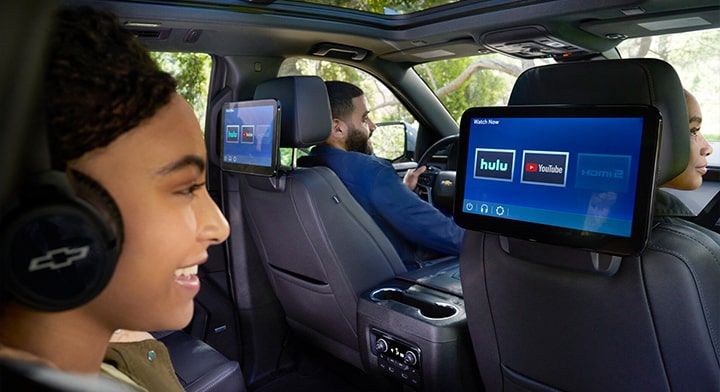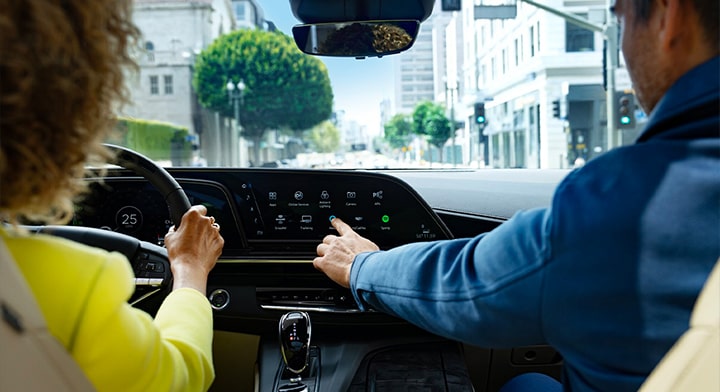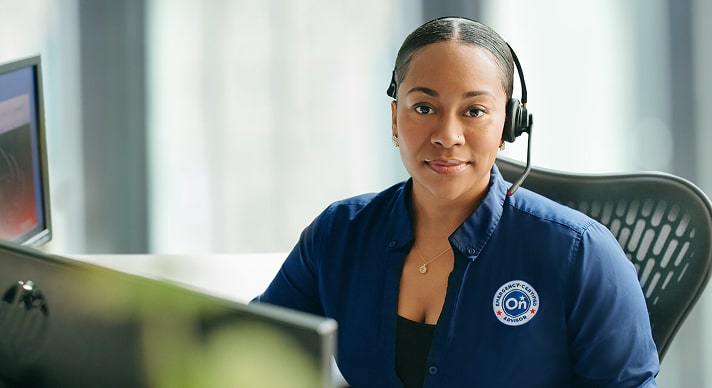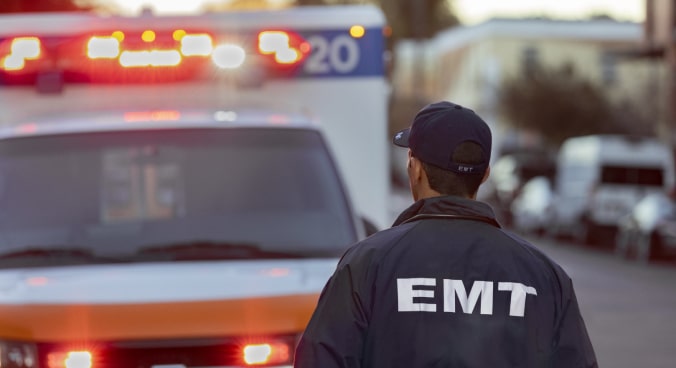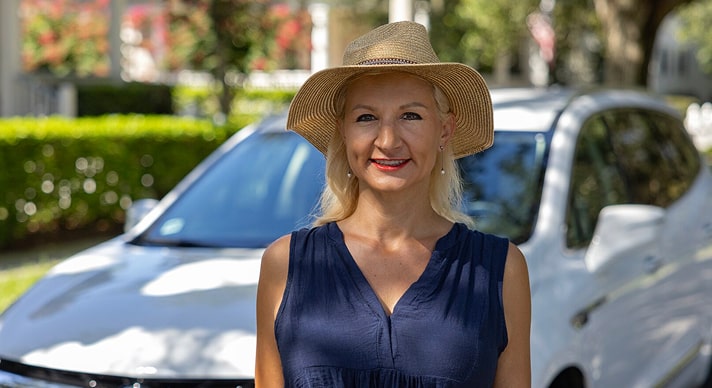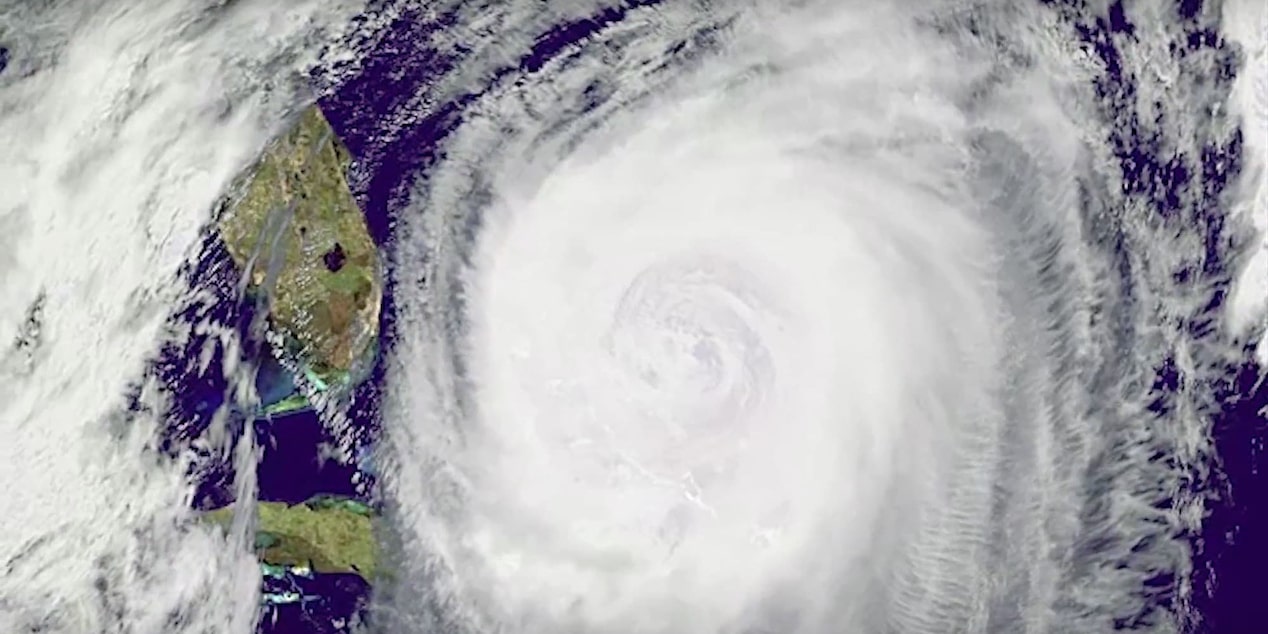In the midst of Hurricane Harvey, 34-year-old Houston native Sandy Garcia was driving her 2015 Chevrolet Malibu when she got caught in a torrential flash flood. “It was raining so hard that everything just went white,” she recalls. Unable to see anything in front of her windshield, Sandy stopped the car. Moments later, she heard a loud crack — “like the sound of a concrete barrier snapping in half” — and looked in the direction of the sound. She’ll never forget what she saw: a river rushing toward her, carrying vehicles in its current. Then her car started to float and the cabin began to take on water. That’s when she started pushing the OnStar button
Preparing for the worst
Before Hurricane Harvey, Sandy had been cynical about storm warnings.
Like many Americans living in areas at risk from hurricanes, she assumed the alert — about a small tropical depression off the Gulf of Mexico — was just another empty threat on the weatherman’s radar.
“I had been on vacation with my family, so we hadn’t really heard much about Harvey,” she recalls. “And we hear about hurricanes all the time.”
Three days before the storm hit, life was more or less normal for Sandy. She made an obligatory trip to buy water bottles in bulk, just in case.
“I was like, I know it’s not going to come to Houston,” she said, amused with reflective humility.
Sandy didn’t have her eye on Harvey.
But OnStar did.
Mary Ann Adams is OnStar’s disaster response manager.
“OnStar’s Command Center keeps an eye on severe weather and disasters around the clock. During hurricane season, we monitor the forecasts closely so that we can notify and prepare our teams for potential danger to our customers,” she says. “When the forecasts identify impacts to areas where our customers are located, we jump into action and begin executing our disaster response plan.”
Three days before Harvey hit, OnStar’s Command Center in Detroit was on heightened alert. With Harvey bearing down on Texas, preparations were already ongoing. OnStar Advisors were preparing to respond to the specific and severe needs of drivers impacted by the storm, while emails were sent to Members with tips on disaster preparedness and what OnStar could do to help when disaster hit.
“Similar to others, our response to hurricanes changed significantly since Hurricane Katrina back in 2005,” says Adams. “Because we know that our customers will frequently contact OnStar for help during severe weather and other disasters, the foundation of our response is supported by formal incident management processes that allow us to quickly respond to whatever the situation.
“Depending on the number of areas evacuated before a hurricane makes landfall, our call volume can increase significantly as people need help finding safe routes, overnight accommodations and last-minute resources like shelter and fuel, all of which can be in scarce supply. So, they push the OnStar button for help.”
Responding to the crisis
On August 25, Harvey made landfall as a Category 4 hurricane. The storm hit just north of Corpus Christi and then stalled over the Houston area over the next several days. In all, the storm unleashed 33 trillion gallons of water, with nearly 52 inches of rain falling on Houston, the greatest amount of rain ever recorded in the continental United States. Harvey damaged more than 200,000 homes and displaced more than 30,000 people.
As the storm hit, a second spike in calls started coming in to OnStar. And not just from OnStar Members.
In 2016, American Red Cross officials reached out to OnStar to help strengthen their relief efforts in the wake of catastrophic flooding in Louisiana. When Harvey began to threaten the Gulf — just as Hurricane Irma started making its way toward Florida — the Red Cross reached out once again. Catherine Bishop manages OnStar’s Global Emergency Services Outreach.
“When these disasters strike, the Red Cross really has to ramp up very quickly,” she says. “So, when it appeared that Harvey was going to hit Texas, we received a call from them asking for our help again.”
OnStar quickly began to handle the overflow of Red Cross calls coming from Texas, which also continued as Hurricane Irma swept across Florida. Using OnStar’s long-term relationships with other public safety organizations, Advisors helped with rescue efforts or medical emergencies. They also helped individuals find shelter and the more basic needs of life such as food, water or health care supplies.
Ultimately, OnStar took more than 700,000 calls from OnStar Members and others in areas impacted by Harvey and Irma. And as the waters rose in Houston, one of those calls came from Sandy Garcia’s 2015 Chevrolet Malibu.
On the ground in Houston
After years of living in a hurricane-prone area, Sandy was unfazed by Harvey after it first made landfall. As the rains fell across Houston, she decided to leave the relative safety of her home to try to pick up some supplies from one of the few stores that was still open.
Instead, she found herself trapped as the waters rose around her vehicle.
She quickly unbuckled her safety belt and tried to get out, but the pressure against the door was already too much for her to open it.
“That’s when I started hitting the OnStar button,” she says. “That’s when he came on the line.”
Sandy doesn’t remember the OnStar Advisor’s name, but she says she’ll always remember what he said to her.
“He told me, ‘Look, the police aren’t coming, so you have to do this, you have to get yourself out of this car and I’m going to help you.”
First, the Advisor told her to put one of the back seats down, crawl into the trunk and open it from the inside to get out. But the water was already too high. Then he instructed Sandy to remove one of the car’s headrests and use it to break her window.
“But no matter how hard I hit it, I couldn’t break the glass,” she says. “That was the moment when I thought I was going to die.”
With the water already at thigh level and rising, Sandy pounded on the window, trying to get the attention of anyone who was around. Thankfully, a small group of men were nearby, and these Good Samaritans made their way into the water to help. While they did, the OnStar Advisor stayed on the line to look out for her.
“It took two of the guys to pry the door open. When they did, the OnStar Advisor asked if I knew who they were,” she says. “When I said I didn’t, he talked to them directly, taking down their names and information to have on record just in case something happened to me.”
Looking forward
Hurricanes Harvey, Irma and Maria caused the deaths of hundreds of people and resulted in billions of dollars in damage, and the Atlantic hurricane season doesn’t end until Nov. 30.
OnStar’s Emergency and Disaster Response Team is staying vigilant.
“We continue to monitor the weather for severe impacts that may affect our customers,” says Bishop, “and we have ongoing dialogue with the Red Cross to make sure we are prepared to meet their needs if they call upon us again. We’re going to be ready.”


